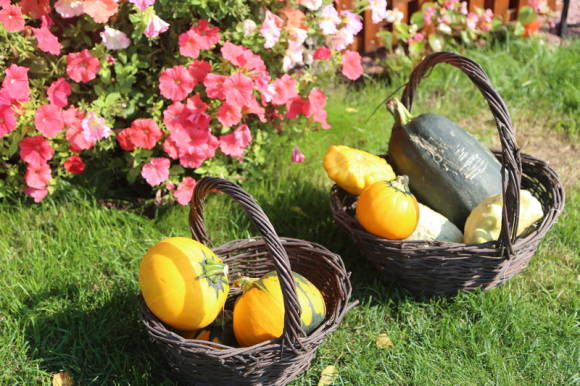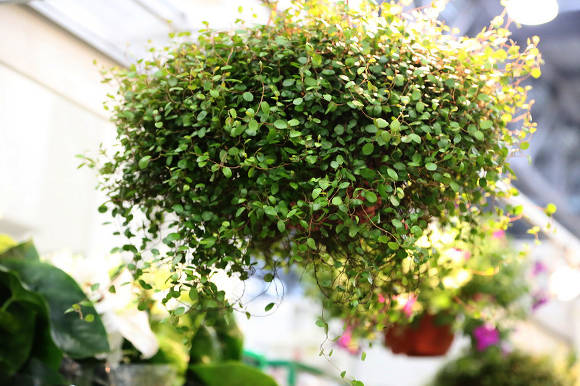
Not everyone can boast of having a personal or suburban area for growing various vegetables, fruits, herbs, etc. on it. But there is a good alternative to a real garden - these are our window sills and loggias.
In addition, with age, even inveterate gardeners become unable to process a garden plot. But my soul does not allow me to sit at home with folded hands, and I don’t want to spend my small pension on dubious vegetables. And then they start a "vegetable garden" in the apartment. However, not only pensioners are engaged in home gardening.
We usually grow plants at home, mostly for the soul, but you can try growing plants for food as well. It turns out to be not so difficult.
For example, tomatoes on the windowsill are no longer exotic. If possible, you can break the "bed" and on the loggia. Moreover, growing tomatoes and caring for them in an apartment is not very different from growing them in a greenhouse.
The main conditions for growing tomatoes in winter in an apartment or in early spring on a loggia are good lighting, regular watering with warm settled water and fertilizing with mineral fertilizers.
Now in stores there are many varieties and hybrids that grow and bear fruit well in indoor conditions. They are resistant to disease, tolerate a lack of light more easily, and practically do not stepchild.
In the home garden, tomatoes are grown in two terms.
- The first term is autumn-winter. To get fresh tomatoes for the New Year's table, and with good care to extend the harvest until January, you need to start growing in August.
- The second term is winter. In this case, it is necessary to start growing in November-December. Then you will get fruit in March or April.

Indoor tomato varieties
If you decide to grow tomatoes on the windowsill, it is more advisable to opt for dwarf low-growing varieties - Room Charm, Pink Pearl, Craiova, Florida Petite, Bonsai, Room Miracle, Balcony Miracle, Gnome, Linda, Japanese dwarf, Micron NK, Wagner Mirabel yellow, Manicure, Garten Freude, Mascot, Arctic Flame, Green Petal, Super Dwarf, Peruvian, Ruby, George Bush.
All these varieties are distinguished by increased shade tolerance, do not stretch, are compact, with a high percentage of fruit set. The height of these plants is from 25 to 60 cm.The mass of fruits is from 20 to 60 g.
On a balcony or loggia, you can also grow determinant tomato varieties, i.e. medium-sized: Titmouse, Snegirek, White filling, Early-83, Dwarf, Shuttle, Dove. A good result is obtained if you use hybrids: Blagovest, Olya, Boomerang, Verlioka, etc.

Indeterminate (liana) varieties and hybrids can also be grown on a loggia, but the capacity must be at least 10 liters. They are even easier to work with. Hybrids are good here: Typhoon F1, Straus F1, Funtik F1, Samara F1, etc.
And for those who want to grow very tall tomatoes, the old, hardy Brazilian variety De Barao red, orange, yellow, black is best suited.
But you will not place it on an ordinary windowsill, and it needs more capacity for soil, at least 2 buckets, tk. with good lighting in the apartment, this plant can grow up to 4 m and at the same time bear fruit for a long time.
Features of growing tomatoes in indoor conditions
For growing low-growing tomatoes, ordinary boxes with a height of at least 12-15 cm, buckets, pots or old pots are suitable. At the bottom of any container, it is necessary to put small pieces of red brick, slate, tiles and some coarse river sand in order to improve air and water exchange in the soil.
Then the container is filled with a soil mixture consisting of equal shares of sod land, humus and ventilated peat, or with a ready-made substrate "Living Earth" and a soil mixture "Tomatoes". Then a pallet must be placed under any containers, becauseat the same time, moisture in the soil will remain longer.
If you don't have crates, buckets, or large pots, use regular thick garbage bags by making drain holes in them and placing the bags in pallets.
A narrow window sill first needs to be expanded. This can be easily done by moving the table to the window or using stools. To do this, two stools must be placed near the window near the radiator and a board 20 cm wide must be placed on them. In this case, the upper part of the containers should be at the level of the windowsill. In this case, the vegetable plants will be both warm and light.

And now let's talk about the temperature, but not about the temperature in the room that is usual for us, but about the temperature of the soil in the box with plants, which stands in winter most often on our sunny windowsill. If the apartment is warm, i.e. 23 ° C, this does not mean that in February or March the soil in the box with plants is also warm.
Take the time to stick the thermometer into the ground, and you will be unpleasantly surprised. Therefore, in order to minimize the influence of cold window sills and icy glass on the soil temperature, it is imperative to put foam tiles under the boxes with plants.
If the box is located far from the window pane, the temperature of the soil in it is usually 4–5 ° C lower than the air in the room. And if the box is on the windowsill next to the frame, then it may be 10-12 or more degrees lower. Therefore, at the end of winter, the icy window glass must be carefully covered with thick paper at night.
It is also necessary to be very careful with the open vents on the window with the "vegetable garden" when the temperature outside the window is very low.
They do not tolerate tomatoes and overheating associated with central heating radiators. Therefore, if they stand next to a heating battery, they must be protected with a screen, a shield made of film or plywood in order to divert hot air aside. The temperature regime in the zone of this mini-vegetable garden should be at least 20 ° С during the day, and within 13-14 ° С at night.
It should also not be forgotten that tomatoes like drafts and do not like humid air. Therefore, near the "vegetable garden" do not hang wet rags on the heating battery.
Further about agricultural technology - in the article Growing tomatoes in the garden.
"Ural gardener", No. 49, 2015
We are grateful to OOO "GAVRISH-USADBA" for the provided photos of varieties "Sinichka" and "Snegirek".









